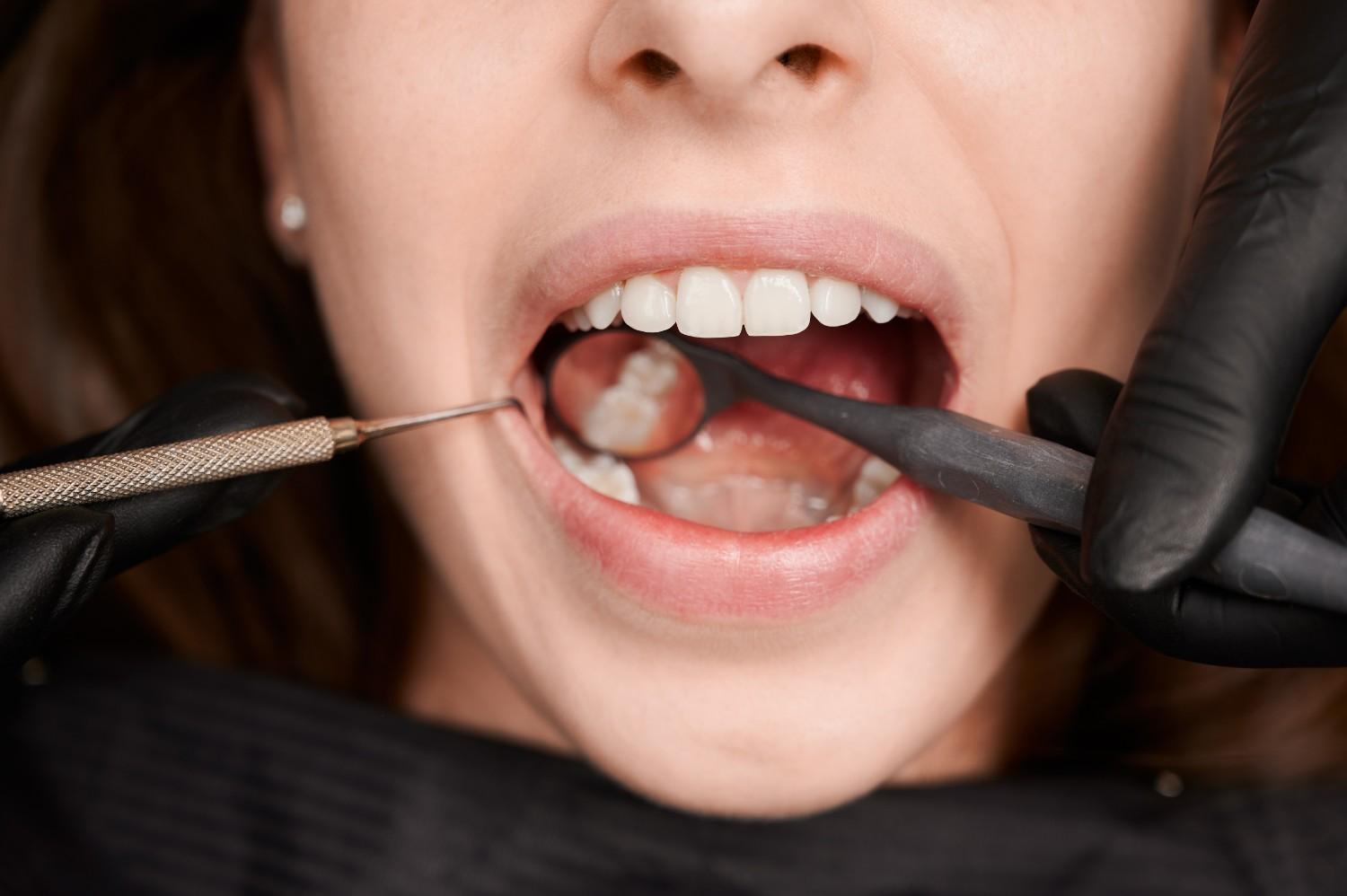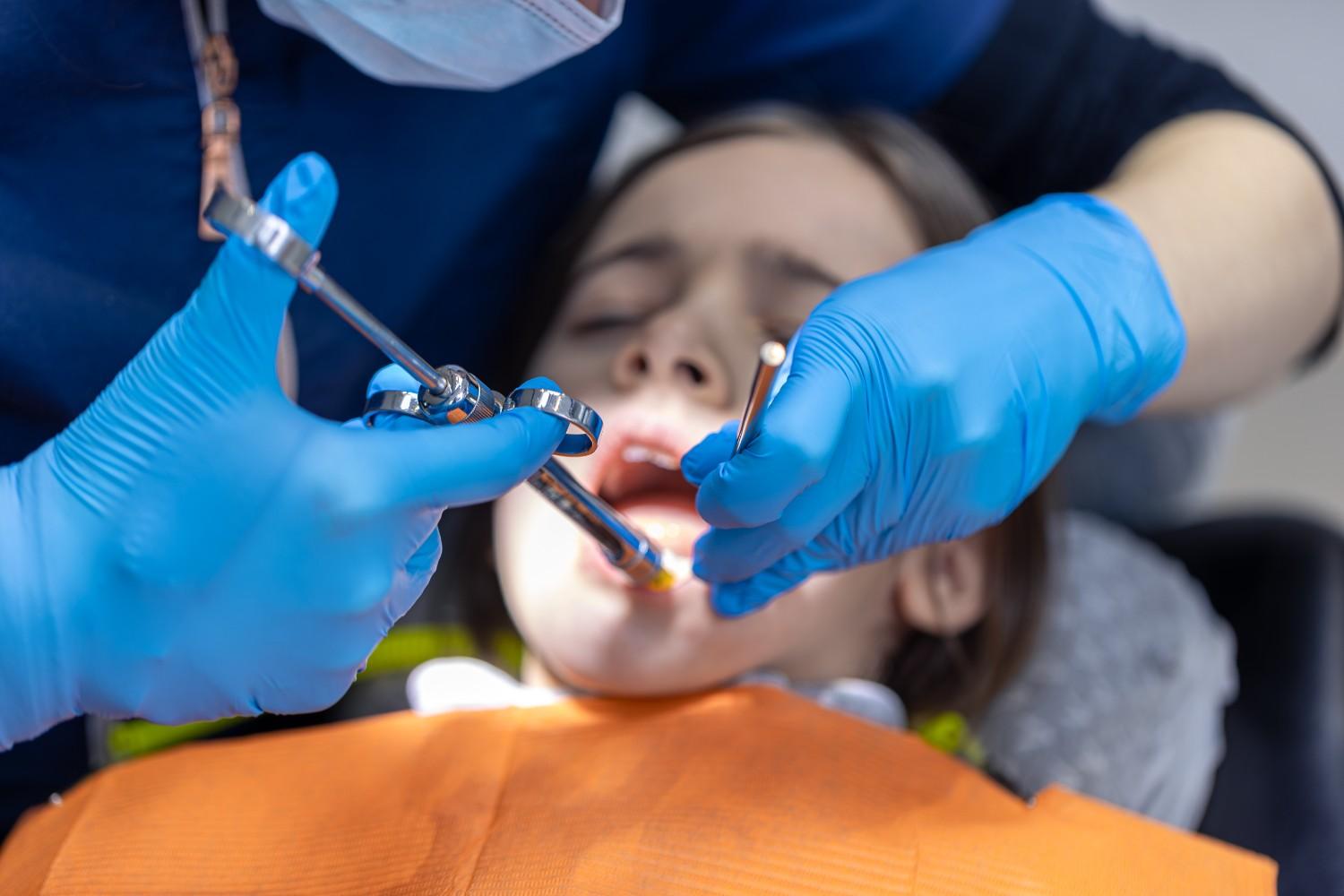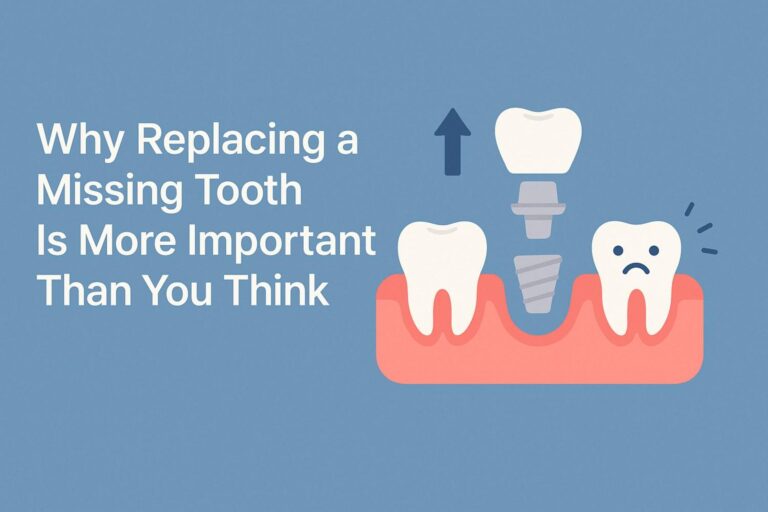Losing a tooth, whether through an accident, decay, or extraction, can feel like a minor inconvenience. It’s easy to think that if the gap isn’t visible when you smile, it’s not a problem worth addressing. However, the consequences of a missing tooth extend far beyond aesthetics. Failing to replace even a single lost tooth can set off a chain reaction of oral health issues that impact your entire mouth and overall well-being.
Understanding the hidden risks is the first step toward protecting your long-term health. The empty space left behind is more than just a gap; it’s a catalyst for significant changes to your dental structure.
The Domino Effect of a Single Missing Tooth
When a tooth is lost, the delicate balance of your bite is disrupted. Each tooth relies on its neighbors and its opposing tooth to remain stable and properly aligned. When one is removed, this support system is compromised, leading to several problems.

Shifting and Misalignment
The teeth adjacent to the gap will naturally begin to drift into the empty space. This movement can cause your once-straight teeth to become crooked and misaligned. Similarly, the tooth in the opposing jaw, which used to meet the missing tooth, may start to “super-erupt” or grow out of its socket in an attempt to find its partner. This shifting can lead to a crooked bite, making it difficult to chew properly and creating new spaces where food can become trapped.
Increased Risk of Decay and Gum Disease
As teeth shift, they create awkward angles and tight spaces that are difficult to clean with regular brushing and flossing. These hard-to-reach areas become breeding grounds for plaque and harmful bacteria, significantly increasing your risk for tooth decay and gum disease. What started as one missing tooth can lead to problems with the surrounding healthy teeth.

Beyond the Smile: Systemic Health Consequences
The impact of a missing tooth is not confined to your mouth. The connections between oral health and overall physical health are well-documented, and tooth loss plays a significant role.
Jawbone Deterioration
Your jawbone requires constant stimulation from the roots of your teeth to maintain its density and form. When a tooth is lost, the underlying bone no longer receives this stimulation and begins to deteriorate, a process known as bone resorption. Over time, this bone loss can weaken the jaw, alter the shape of your face, and compromise the stability of neighboring teeth, potentially leading to further tooth loss.

Nutritional and Digestive Issues
Missing teeth, especially molars, can make it difficult to chew food thoroughly. This may cause you to avoid certain healthy foods, such as fibrous vegetables, fruits, and lean proteins, which can lead to nutritional deficiencies. Improperly chewed food is also harder for your digestive system to process, which can contribute to digestive discomfort.
Restoring Function and Confidence
Replacing a missing tooth is an investment in your oral and overall health. Modern dentistry offers several effective solutions to fill the gap, restore function, and prevent these complications. Options range from dental bridges, which use adjacent teeth as anchors, to partial dentures.
For a permanent and durable solution, dental implants are often considered the gold standard. An implant acts as an artificial tooth root, which is surgically placed into the jawbone. This not only provides a stable foundation for a new crown but also stimulates the jawbone, preventing bone loss. If you’re exploring this option, a consultation with an experienced professional, like an implant dentist in Las Vegas or your local area, can determine if you are a good candidate.
Making an Informed Decision
Ignoring a missing tooth can lead to a cascade of problems that are more complex and costly to fix in the long run. The best course of action is to address the issue promptly.
Your journey starts with a conversation. Schedule an appointment with your dental provider to discuss your situation. They can perform a comprehensive evaluation, explain the advantages and disadvantages of each replacement option, and help you choose a solution that fits your health needs, lifestyle, and goals. Taking this proactive step will protect your smile and support your health for years to come.

